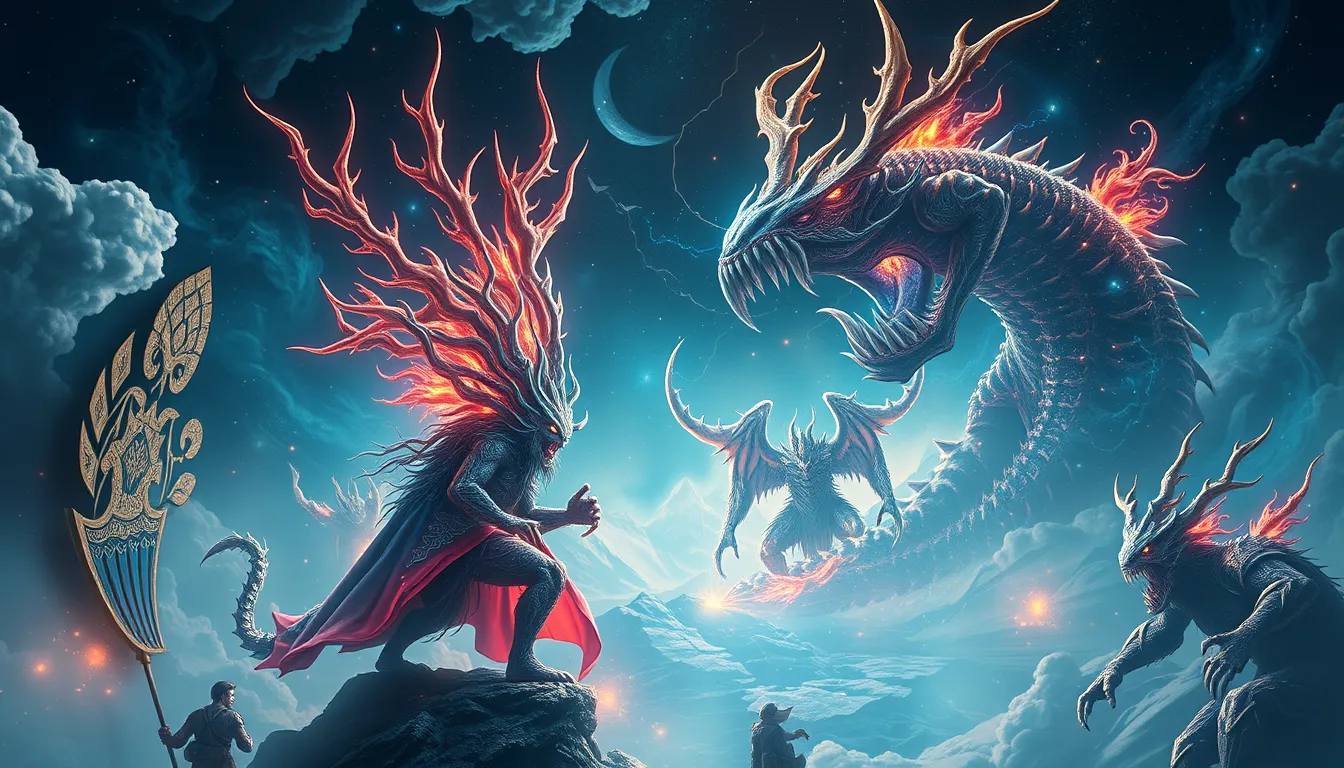I. Introduction
A. Overview of Mesopotamian mythology and its significance
Mesopotamian mythology, the collection of myths and legends of the ancient Mesopotamians, offers valuable insights into the worldview, beliefs, and values of this influential civilization. Deeply intertwined with their religious practices and daily lives, Mesopotamian myths explored various themes, including creation, human existence, morality, and the nature of the universe. Studying this rich mythology not only illuminates the Mesopotamian understanding of the world but also provides a glimpse into the cultural context that shaped their society.
B. Importance of understanding the role of evil spirits in Mesopotamian beliefs
Within Mesopotamian mythology, the presence of evil spirits holds immense significance. These malevolent entities were believed to exert a profound influence on human life, causing illness, misfortune, and chaos. Understanding the nature and role of these evil spirits is crucial for comprehending the Mesopotamian worldview and appreciating their complex belief system. By examining how these spirits were perceived, feared, and countered, we can gain a deeper understanding of the anxieties and aspirations that shaped Mesopotamian society.
VI. The Legacy of Evil Spirits in Mesopotamian Culture
A. Exploring the enduring influence of evil spirits on Mesopotamian society and beliefs
The impact of the Seven Evil Spirits extended far beyond the realm of religious beliefs, leaving an indelible mark on Mesopotamian society and culture. These malevolent entities permeated various aspects of daily life, shaping social practices, influencing artistic expressions, and solidifying their presence in literary works. The fear of evil spirits motivated the development of elaborate rituals and protective measures, becoming an integral part of Mesopotamian societal fabric.
B. Analyzing the impact of evil spirits on Mesopotamian art, literature, and religion
The influence of evil spirits manifested vividly in Mesopotamian art and literature. Evil spirits were often depicted as monstrous figures, embodying fear and malevolence, serving as a visual reminder of the dangers they posed. In Mesopotamian literature, evil spirits played a prominent role as antagonists, driving the narrative and highlighting the struggles faced by heroes and deities. Their presence added a layer of complexity to the stories, reflecting the Mesopotamian understanding of the constant battle between good and evil.
C. Examining the relevance of the seven evil spirits in contemporary understanding of Mesopotamian culture
Understanding the Seven Evil Spirits remains crucial for contemporary scholars and enthusiasts seeking to delve deeper into Mesopotamian culture. By studying these figures, we gain insights into the Mesopotamian perception of the supernatural, their anxieties and beliefs, and the strategies they employed to combat the forces of evil. The legacy of the Seven Evil Spirits serves as a testament to the enduring power of myth and its ability to shape the cultural landscape of a civilization.
VII. Conclusion
A. Summarizing the key insights gained from the study of the seven evil spirits
Through an exploration of the Seven Evil Spirits in Mesopotamian mythology, we have gained valuable insights into the Mesopotamian worldview, beliefs, and anxieties. We have discovered how these malevolent entities were perceived, feared, and ultimately countered, revealing the complex relationship between humans and the supernatural in Mesopotamian society. By understanding the nature and role of the Seven Evil Spirits, we gain a deeper appreciation for the rich tapestry of Mesopotamian mythology and its enduring impact on our understanding of this ancient civilization.
B. Highlighting the significance of understanding the role of evil spirits in Mesopotamian beliefs
Understanding the role of evil spirits in Mesopotamian beliefs provides significant insights into their cultural, social, and religious landscape. It underscores the pervasiveness of these entities in daily life, shaping rituals, influencing art, and driving literary narratives. Studying the Seven Evil Spirits allows us to appreciate the Mesopotamian perspective on the struggle between good and evil, their methods of coping with fear, and their strategies for seeking protection from malevolent forces. Ultimately, the exploration of these figures sheds light on the intricate relationship between humans and the supernatural in Mesopotamian society.
FAQ
1. Who were the Seven Evil Spirits in Mesopotamian mythology?
The Seven Evil Spirits were malevolent entities believed to bring illness, misfortune, and chaos to human lives. They were:
- Asakku: A female demon associated with disease and death.
- Alu: A male demon associated with wind and storms.
- Gallu: A male demon associated with the underworld and death.
- Lamassu: A male demon associated with disease and demons.
- Lilitu: A female demon associated with seduction and childbirth complications.
- Rabisu: A male demon associated with plague and pestilence.
- Uttuku: A male demon associated with disease and misfortune.
2. How did the Mesopotamians perceive the Seven Evil Spirits?
The Mesopotamians viewed the Seven Evil Spirits with fear and dread, believing them capable of inflicting harm and causing misfortune. They were seen as malevolent forces that needed to be appeased or warded off through rituals and protective measures.
3. How did the Mesopotamians protect themselves from the Seven Evil Spirits?
The Mesopotamians employed various methods to protect themselves from the Seven Evil Spirits, including:
- Rituals: Performing rituals and offerings to appease the spirits.
- Amulets and talismans: Wearing amulets or carrying talismans believed to ward off evil spirits.
- Incantations and spells: Reciting incantations and spells to drive away the evil spirits.
4. What is the significance of studying the Seven Evil Spirits in Mesopotamian mythology?
Studying the Seven Evil Spirits provides insights into the Mesopotamian worldview, beliefs, and anxieties. It reveals the pervasiveness of these entities in daily life, shaping rituals, influencing art, and driving literary narratives. Understanding the role of the Seven Evil Spirits allows us to appreciate the Mesopotamian perspective on the struggle between good and evil, their methods of coping with fear, and their strategies for seeking protection from malevolent forces.




